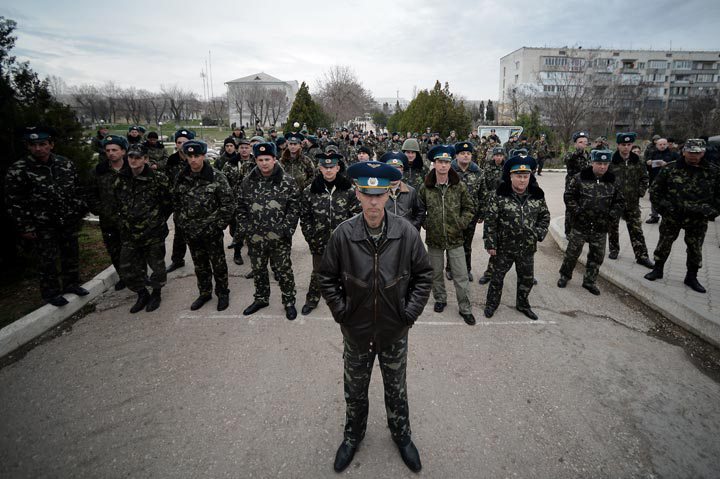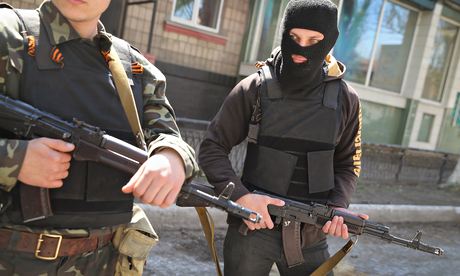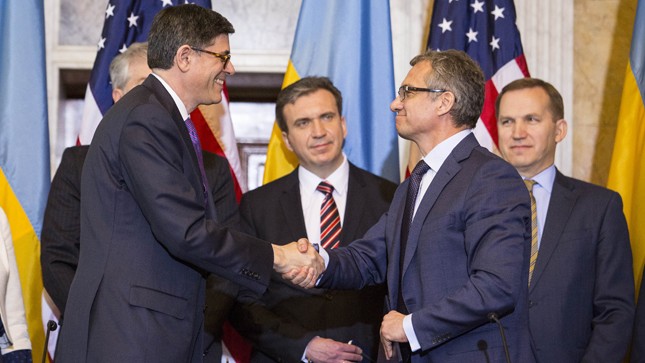#MH17: Answers To Questions You Might Have About The Russia-Ukraine Conflict
All you need to know about the Russia-Ukraine conflict.
A: Ukraine and Russia ties have been tense since the dissolution of the Soviet Union. Things escalated when Ukrainians protested for closer ties to the European Union, thus ousting pro-Russian president Viktor Yanukovych in February 2014. The Ukrainian revolution and the argument of who owns Crimea is another source of conflict.
Things escalated when Ukrainians protested in favour to join the European Union, whereas their president was siding towards Russia.
Image via rferl.orgThe conflict dates back to before the dissolution of the Soviet Union. Tensions between Ukraine and Russia escalated this past February, when protests for closer Ukrainian ties to the European Union drove out Ukraine's pro-Russian president, Viktor Yanukovych. Back in November 2013, Yanukovych refused to sign an agreement with the EU that contributed to the political turmoil.
go.comEuromaidan was a wave of demonstrations and civil unrest in Ukraine, which began on the night of 21 November 2013 with public protests in Maidan Nezalezhnosti ("Independence Square") in Kiev, demanding closer European integration. The scope of the protests expanded, with many calls for the resignation of President Viktor Yanukovych and his government. The protests ultimately led to the 2014 Ukrainian revolution.
A: The fighting between both sides has killed over 400 people over the last few months, while MH17 is the third plane to have been shot down in the same period
There were lots of casualties and MH17 was the third plane to be shot down in a span of a few months.
Image via globalnews.caFighting between pro-Russia rebels and Ukrainian troops has killed more than 400 people in eastern Ukraine in the last few months, the U.N reported, while tens of thousands have fled their homes.
go.comOn Feb 20, there was bloodshed in Kiev with at least 88 people killed in 48 hours, and nearly 600 wounded. Video showed police snipers firing live rounds at a group of protesters carrying makeshift shields.
A Russian jet has shot down a Ukrainian war plane, Ukraine’s military has claimed, in a dramatic escalation of tensions on the two countries' common border. A Ukrainian Su-25 war plane operating over Eastern Ukraine was downed by a rocket fired by a Russian fighter on Wednesday evening, Ukraine’s Security Council claimed at a press briefing on Thursday.
telegraph.co.ukQ: I heard that Russia and Ukraine were fighting previously. Does it have anything to do with Crimea?
A: Crimea is located 482 kilometres away from the rebel-held part in Ukraine. Parts of Eastern Ukraine and Crimea contain both anti-Russian extremists and pro-Russian separatists. Therefore, Russian troops marched into Crimea to protect civilians against extremists.
By the end of February, pro-Russian gunmen seized buildings in the Crimean capital, Simferopol and the next stage of crisis began. A referendum in Crimea saw over 97 per cent of them vote to join Russia in a move that the EU and other world powers consider illegal and void. Soon after, Mr Putin defended Russia's actions in Crimea and signed an agreement to absorb the peninsula into the Russia Federation. Pro-Russian rebels in various cities across eastern Ukraine then decided they wanted to join Russia and protests have been taking place since April in Donetsk, Luhansk and Kharkiv, demanding a referendum.
In March, Russian President Vladimir Putin argued that a group of anti-Russian extremists in power in Ukraine were a threat to Russian-speaking people who lived in Crimea, which was made up of about 60 percent Russian people. Putin called the events in Ukraine an illegal coup and ordered troops into Crimea. Putin told Germany Chancellor Angela Merkel that he needed to protect ethnic Russians in Crimea from "ultranationalistic forces" in Ukraine.
go.comA: As of now, both countries have claimed Crimea as part of their territory. As a result, pro-Russian rebels or seperatists have been battling with Ukrainian government troops in eastern Ukraine.
Pro-Russia rebels, or separatists, have been fighting with Ukrainian government troops in eastern Ukraine. Russian authorities have claimed Crimea as Russian territory while the Ukrainian government claims Crimea is still a part of its country.
go.comAs well as physical might, Mr Putin has been using the financial power of Russia to intimidate Ukraine. As well as amassing troops on various border, Moscow has threatened to cut gas supplies to Ukraine if debt-stricken Kiev failed to pay off debts. In the past week pro-Russian insurgents have been firing at aircraft in disputed areas of Donetsk.
A: Although majority of Ukrainians support the revolution, many that stay on the Eastern side of Ukraine do not agree with the revolution, thus siding more to Russia. This then led to protests to allow them to be part of Russia, before Ukrainian military began to engage them.
An organized political movement known as 'Euromaidan' demanded closer ties with the European Union, and the ousting of Yanukovych. This movement was ultimately successful, culminating in the 2014 Ukrainian revolution, which removed Yanukovych and his government. However, some people in largely Russophone eastern and southern Ukraine, the traditional bases of support for Yanukovych and his Party of the Regions, did not approve of the revolution, and began to protest in favour of closer ties with Russia. Various demonstrations were held in Crimea in favour of leaving Ukraine and accession to the Russian Federation, leading to the 2014 Crimean crisis.
Q: Okay, I understand what is going on so far. But what is the rest of the world doing about it? Is United States involved?
A: The United States have announced a 1 billion loan to Ukraine, to help finance Ukraine's bills and financial affairs. Besides that, President Obama has announced sanctions on certain Russian companies.
Soon after Putin ordered troops into Ukraine, the U.S. announced in March a $1 billion loan guarantee to help Ukraine’s bank and finance ministry with its financial affairs and help prepare the country for its national elections in May.
go.comThis week, US President Barack Obama announced sanctions against Russia, hoping to end the pro-Russia insurgency in eastern Ukraine. The sanctions target two major energy firms, financial institutions, eight weapons firms and four individuals.
Q: Thanks for updating me. But what does this have to do with Flight MH17? Why is the airspace restricted?
A: Flight MH17 was flying at 33,000 feet, which was within the guidelines set by Ukrainian airspace officials. Although it was 1,000 feet above restricted airspace, it was still within range of the ground-to-air missile. Advice was also issued recently to avoid flying over certain parts of Ukraine due to the conflict.
Flight MH17 was flying within guidelines, however it was still within range of ground-to-air missiles.
Image via says.comEurocontrol said Ukrainian authorities had barred aircraft from ground level to 32,000 feet but the doomed aircraft was cruising at 33,000 feet, still within range of sophisticated ground-to-air weaponry, when it was hit. All flights in eastern Ukraine have now been barred from the area, Eurocontrol added.
A notice posted by the UK's Civil Aviation Authority (CAA) on 14 June urged carriers to avoid overflying Crimea and parts of southern Ukraine a month ago due to safety concerns, but they were not ordered to avoid the rest of the country.






